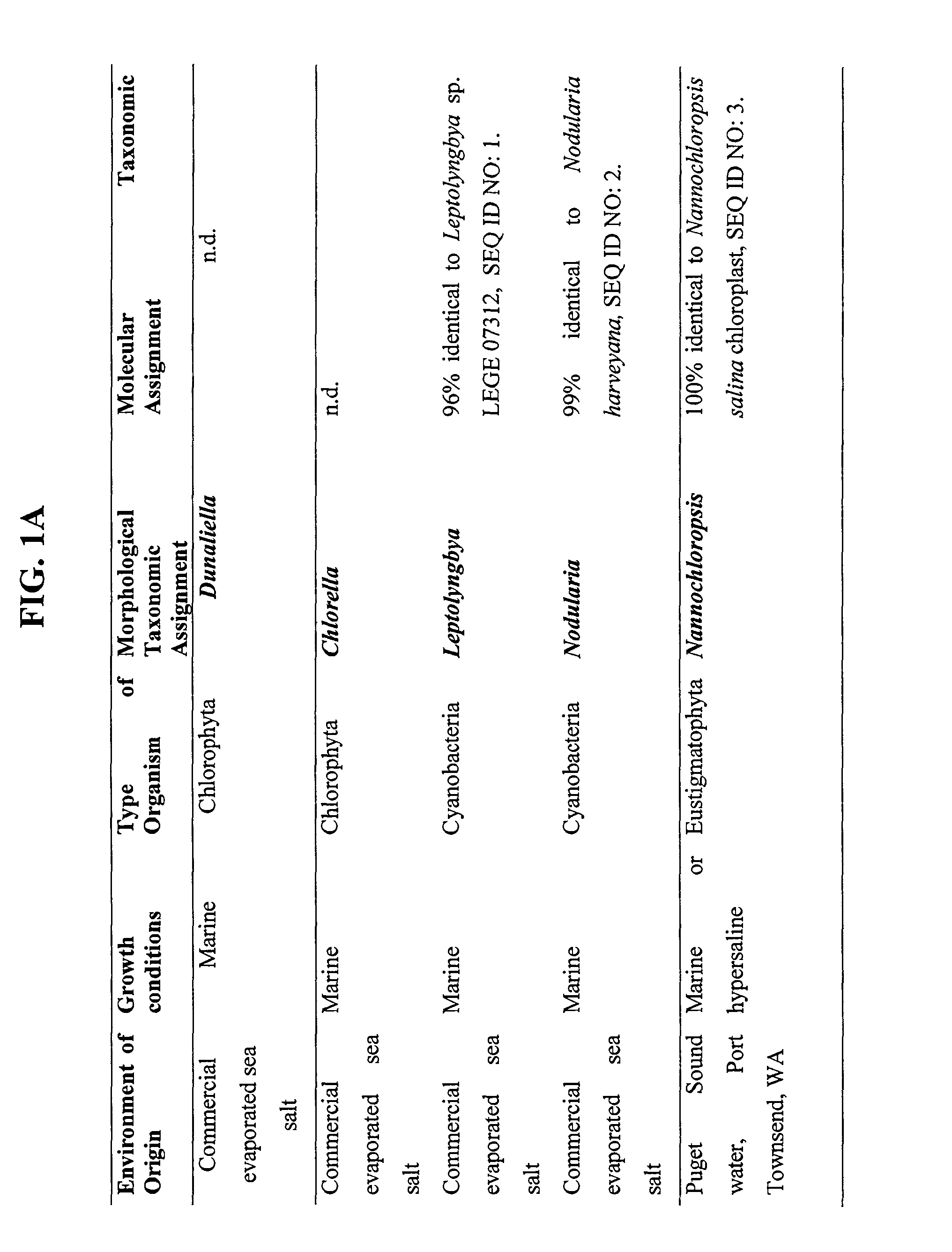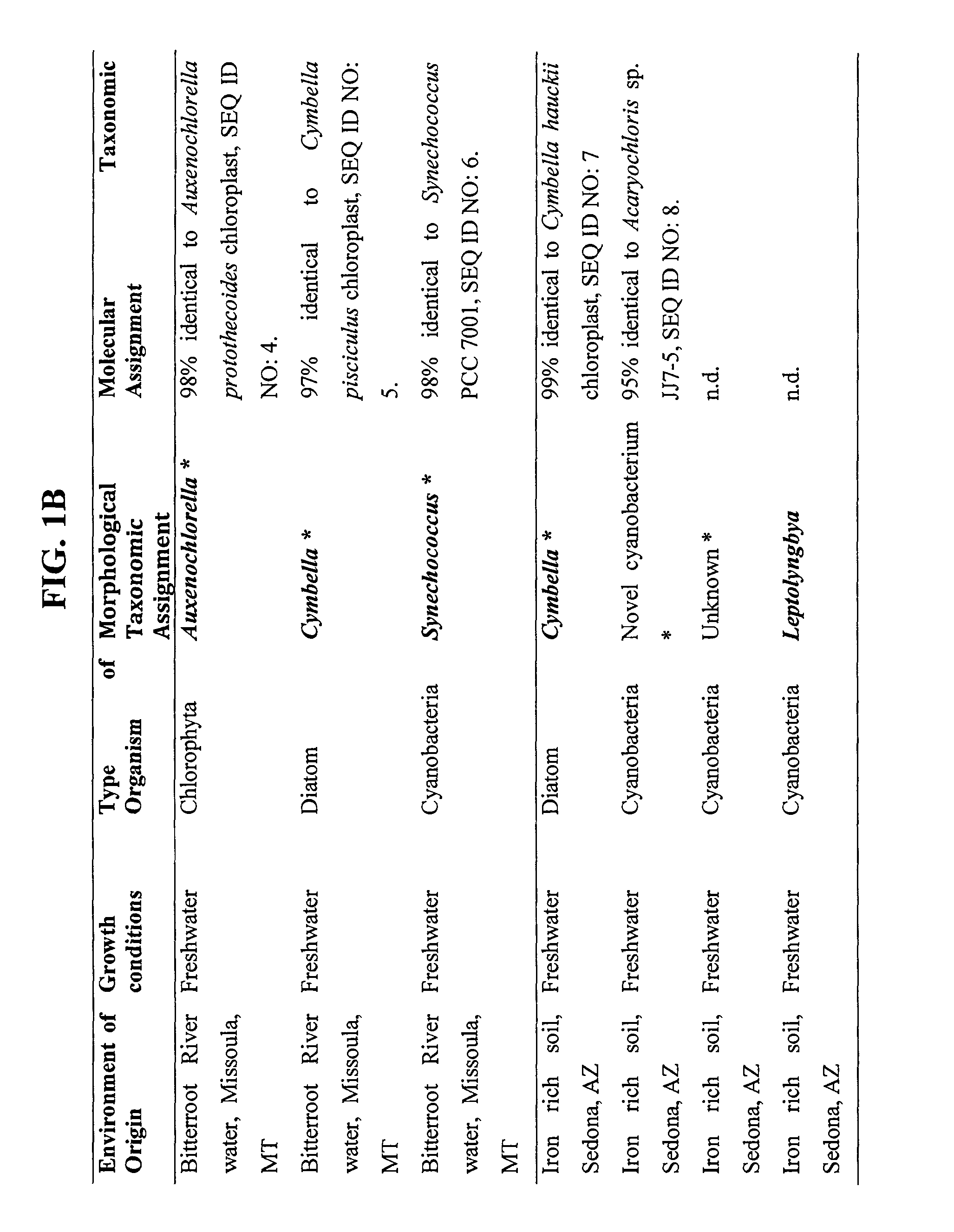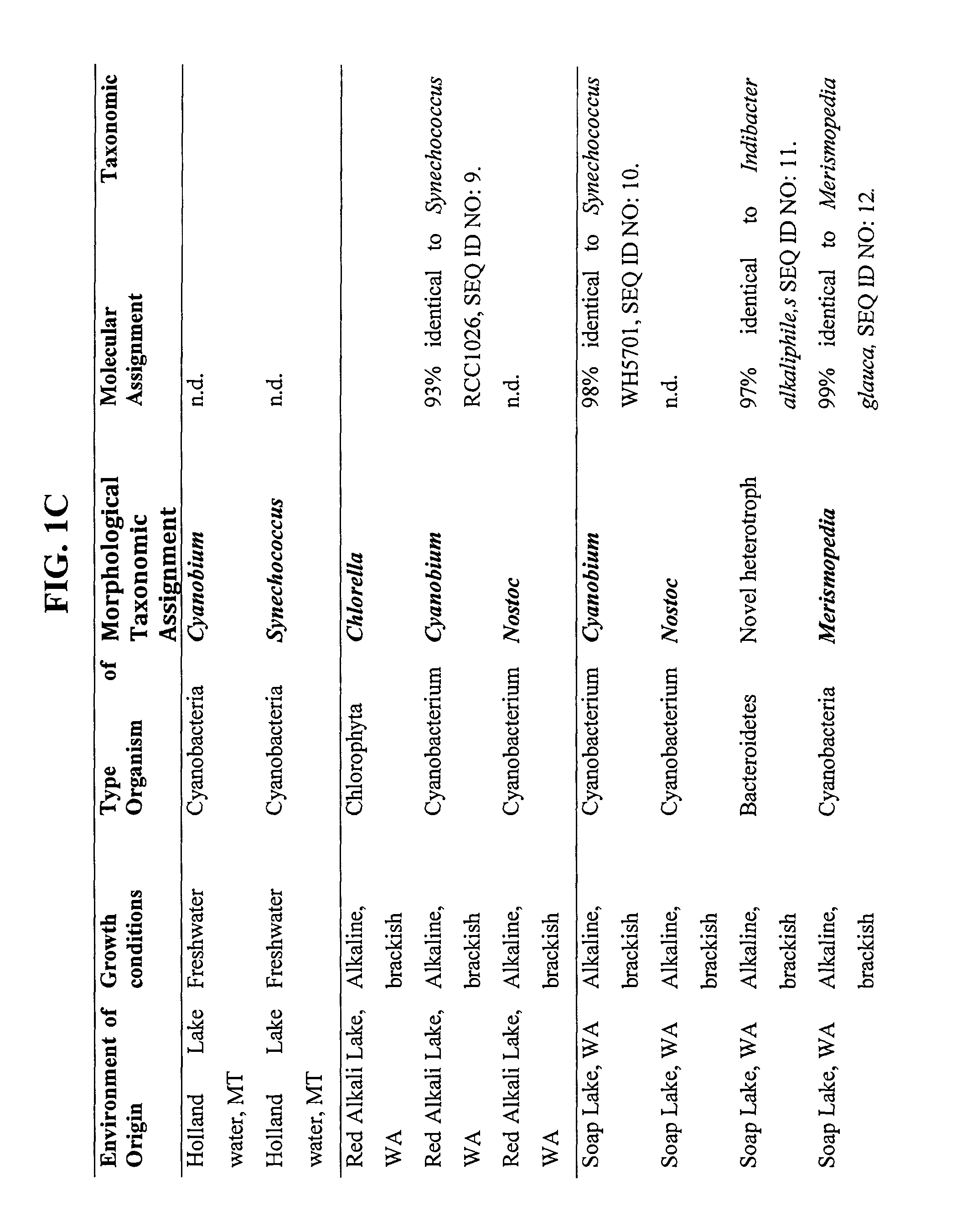Production of cyanobacterial or algal biomass using chitin as a nitrogen source
a technology of cyanobacteria or algal biomass and nitrogen source, which is applied in the direction of microorganisms, plant cultivation, biological water/sewage treatment, etc., can solve the problems of high insoluble content and add significantly to the cost and energy required to carry out large-scale operations, and achieve the effect of carbon neutrality
- Summary
- Abstract
- Description
- Claims
- Application Information
AI Technical Summary
Benefits of technology
Problems solved by technology
Method used
Image
Examples
example 1
General Enrichment Culture and Strain Isolations
[0030]An example scheme for the enrichment of cyanobacterial or algal strains that grow on chitin is presented as follows.
[0031]Nitrogen-free culture medium that replicates or mimics the environmental conditions in which the water or surface sediment sample comes from is prepared and autoclaved. Example culture media includes BG-11 for the isolation of freshwater strains and ASN III for the isolation of marine strains. The media recipes are modified so that they omit any form of added nitrogen (nitrate or ammonia). Purified, ground, autoclaved chitin is added to the medium to the approximate final concentration of 0.5% in a sterile culture flask or bottle. One or several milliliters of freshly obtained water and / or surface sediment is added to the culture flask as the inoculum. This enrichment culture is incubated under the light (either natural sunlight or artificial light) until photosynthetic organisms appear (takes anywhere from 1-...
example 2
Sampling, Enrichment Culture, and Isolation of Cyanobium
[0032]Five liters of surface water was collected from Soap Lake, Wash. on Mar. 28, 2010. The temperature of the water was 11.6° C., the pH was 9.83, and the conductivity was 23 mS. The water sample was transported back to the laboratory in Missoula, Mont. and was used to inoculate 25 mL culture media in 250 mL culture flasks that were incubated under a full-spectrum plant light at 18° C. The culture medium (Soap Lake autotrophic medium) contained (per liter): 1.5 g NaCl, 3.4 g NaHCO3, 2.85 g NaCO3, 0.95 g Na2HPO4, 2.5 g Na2SO4, 0.95 g KCl, 0.035 g KNO3, 0.01 g NH4Cl, 1.5 g CaSO4.2H2O, 2.45 g MgCl2.6H2O, 2.5 mL 1 mM EDTA, 2.5 mL ammonium-iron solution (1 mM NH4Cl, 1 mM Fe(III)Cl3, 2.5 mM sodium citrate, 0.025 N HCl) and 1 mL trace metal solution (per liter: 2.86 g boric acid, 1.81 g MnCl2.4H2O, 0.222 g ZnSO4.7H2O, 0.39 g NaMoO4.2H2O, 0.049 g CoCl2.6H2O), pH adjusted to 9.5. Measurement of cyanobacterial growth was monitored by ...
example 3
Enrichment and Isolation of Nodularia and Nostocales spp
[0037]Commercial sea salt crystals were dissolved into N-free ASN III medium containing purified chitin and incubated at room temperature under artificial light. After several weeks, small intensely green clumps appeared on the chitin particles. Microscopic examination showed that these were colonies largely made of filamentous, heterocyst- or akinete-forming cyanobacterial filaments that belong to the Nostocales family. Enrichments of related cyanobacteria were also obtained from Red Alkali Lake, Wash., and from Soap Lake, Wash. Enrichment cultures, however, proved difficult to purify the Nostocales spp. from other phototrophs by serial dilution, even in culture medium lacking nitrogen (these strains are capable of fixing nitrogen and hence grow slowly in nitrogen-free media). Pure cultures were obtained by plating on solid medium containing nitrate or ammonia.
PUM
| Property | Measurement | Unit |
|---|---|---|
| doubling time | aaaaa | aaaaa |
| temperature | aaaaa | aaaaa |
| diameter | aaaaa | aaaaa |
Abstract
Description
Claims
Application Information
 Login to View More
Login to View More - R&D
- Intellectual Property
- Life Sciences
- Materials
- Tech Scout
- Unparalleled Data Quality
- Higher Quality Content
- 60% Fewer Hallucinations
Browse by: Latest US Patents, China's latest patents, Technical Efficacy Thesaurus, Application Domain, Technology Topic, Popular Technical Reports.
© 2025 PatSnap. All rights reserved.Legal|Privacy policy|Modern Slavery Act Transparency Statement|Sitemap|About US| Contact US: help@patsnap.com



